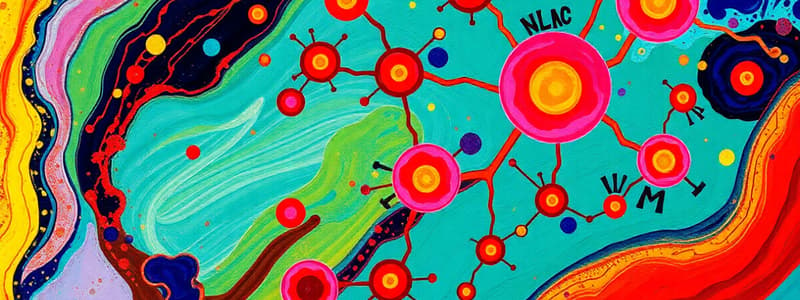Podcast
Questions and Answers
What occurs when Cytochrome P450s are exposed to certain xenobiotics?
What occurs when Cytochrome P450s are exposed to certain xenobiotics?
- They become non-functional.
- They convert xenobiotics to exogenous substances.
- Their activity decreases significantly.
- Their amount increases. (correct)
Which of the following statements about Cytochrome P450 activity is true?
Which of the following statements about Cytochrome P450 activity is true?
- Some isoforms are involved in the metabolism of carcinogenic substances. (correct)
- They catalyze reactions that introduce two oxygen atoms from molecular oxygen.
- All isoforms are found exclusively in the liver.
- Hydroxylated products lead to decreased water solubility.
What role do lipids, particularly phosphatidylcholine, play in the Cytochrome P450 system?
What role do lipids, particularly phosphatidylcholine, play in the Cytochrome P450 system?
- They hinder enzyme activity.
- They act as essential components of the system. (correct)
- They are substrates for enzyme reactions.
- They reduce the solubility of the hydroxylated products.
What is a potential clinical implication of the inducibility of Cytochrome P450s?
What is a potential clinical implication of the inducibility of Cytochrome P450s?
How does the catalytic activity of polymorphic forms of Cytochrome P450s impact patients?
How does the catalytic activity of polymorphic forms of Cytochrome P450s impact patients?
Flashcards
Cytochrome P450s
Cytochrome P450s
Hemoproteins with diverse functions, responsible for modifying both internal (endogenous) and external (exogenous) substances.
Cytochrome P450 Isoforms
Cytochrome P450 Isoforms
A large family of cytochrome P450 enzymes, with around 150 different members, each having a specific role in metabolism.
Cytochrome P450 Induction
Cytochrome P450 Induction
The process where the amount of a specific Cytochrome P450 enzyme increases due to exposure to foreign chemicals (xenobiotics) like drugs.
Where are Cytochrome P450s found?
Where are Cytochrome P450s found?
Signup and view all the flashcards
Cytochrome P450's Role in Metabolism
Cytochrome P450's Role in Metabolism
Signup and view all the flashcards
Study Notes
Cytochrome P450s
- Cytochrome P450s catalyze reactions that introduce one atom of oxygen derived from molecular oxygen into the substrate, yielding a hydroxylated product.
- All Cytochrome P450s are hemoproteins with a broad substrate specificity, acting on many exogenous and endogenous substrates.
- There are numerous isoforms of cytochrome P450 (approximately 150).
- Cytochrome P450s are primarily located in the endoplasmic reticulum, particularly in the liver; however, they can also be found in the mitochondria of adrenal tissues and the endoplasmic reticulum.
- Many cytochrome P450s are inducible, meaning their amount increases with the administration of certain xenobiotics, such as phenobarbital. This induction has clinical implications due to its role in drug interactions (e.g., warfarin and phenobarbital).
- Lipids, specifically phosphatidylcholine, are components of the cytochrome P450 system.
- Specific isoforms of cytochrome P450s, such as CYP1A1, are involved in the metabolism of polycyclic aromatic hydrocarbons (PAHs), which are present in cigarette smoke. They are also involved in PAH metabolism and the development of cancer. Smokers tend to have higher levels of this enzyme compared to nonsmokers.
- Some cytochrome P450s exist in polymorphic forms exhibiting varying catalytic activity potentially explaining differences in drug response between patients.
- Hydroxylated products of cytochrome P450 reactions are often more water-soluble, enhancing excretion.
- Cytochrome P450 activity can be altered in diseased tissues, such as cirrhosis, impacting drug metabolism.
Studying That Suits You
Use AI to generate personalized quizzes and flashcards to suit your learning preferences.




